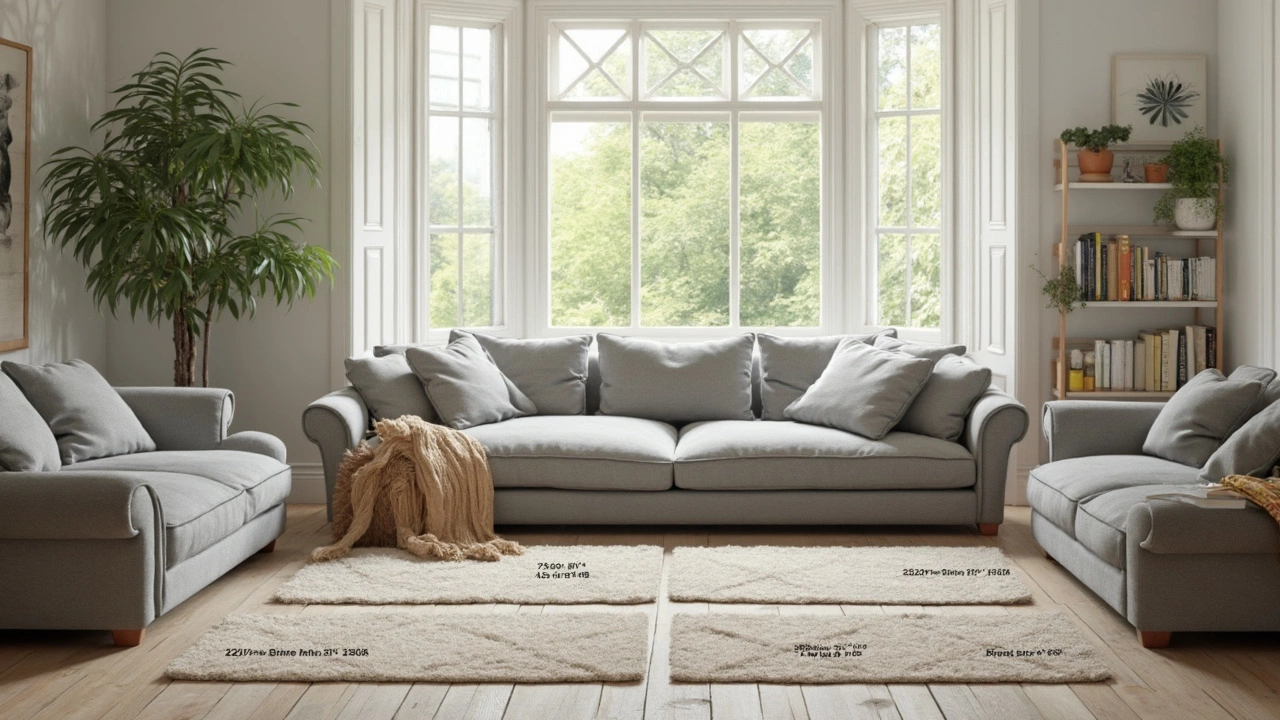Best Rug Size Guide: Simple Steps to Pick the Right Rug
Choosing a rug can feel overwhelming, but it doesn’t have to be. All you need is a quick measurement and a few basic rules. In this guide we’ll walk through how to size a rug for living rooms, dining rooms, bedrooms, and hallways, so you can avoid buying a rug that’s too big or too small.
Living Room and Family Room Rugs
Start by deciding how you want the furniture to sit on the rug. The most common look is to have the front legs of the sofa and chairs rest on the rug. Measure the distance between those legs—add a foot on each side and you have your minimum rug size. For a standard three‑seat sofa, a 5x8 foot rug usually works well. If you have a larger sectional, go up to 8x10 or 9x12. Remember, the rug should create a unified seating area, not a tiny island.
Another option is a “floating” rug where all furniture sits on the floor. This works in spacious rooms with high ceilings. In that case, pick a rug that leaves at least 18‑24 inches of bare floor around the perimeter. It makes the space feel balanced and gives the eye room to rest.
Dining Room Rugs
For a dining table, the rug needs to extend past the chairs when they’re pulled out. A good rule is to add 24‑30 inches on each side of the table. Measure the table’s length and width, then add those extra inches. For a 6‑foot table, a 9x12 rug is typically perfect. If your table is round, choose a rug that’s at least 4‑5 feet larger in diameter than the table.
Round rugs work nicely under round tables, but square rugs can also look great if they’re centered. Just make sure the rug doesn’t snag the chair legs when you slide them in and out.
Bedroom Rugs
Bedrooms have two main rug styles: a large runner that sits at the foot of the bed, or a full‑size rug that reaches under the nightstands. For a runner, aim for a length that’s 2‑3 feet longer than the bed and a width of 2‑3 feet. For a full‑size rug, the best choice is to leave at least 18 inches of floor visible around the bed. A 6x9 rug works for a queen‑size bed, while a king‑size bed often needs an 8x10.
If you love a layered look, place a smaller rug in front of a larger, neutral‑colored one. This adds texture without making the room feel crowded.
Hallways and Entryways
Rugs for hallways should match the width of the hallway, leaving a few inches of floor visible on each side. A runner that’s 2‑3 feet wide works for most standard hallways. For high‑traffic entryways, choose a low‑pile or flat‑weave rug that’s easy to clean.
Measure the length of the hallway and pick a rug that covers at least 75% of it. If the hallway is very long, consider two identical runners with a small gap between them for visual interest.
Now that you have the basic formulas, measuring a space and picking a rug becomes a quick task. Grab a tape measure, write down the numbers, and compare them to the rug dimensions you’re eyeing. You’ll avoid costly returns and end up with a rug that ties the room together perfectly.
Confused about rug sizes under your couch? Get detailed tips, pro insights, and data on choosing the perfect living room rug size that fits just right.
Jun, 29 2025
